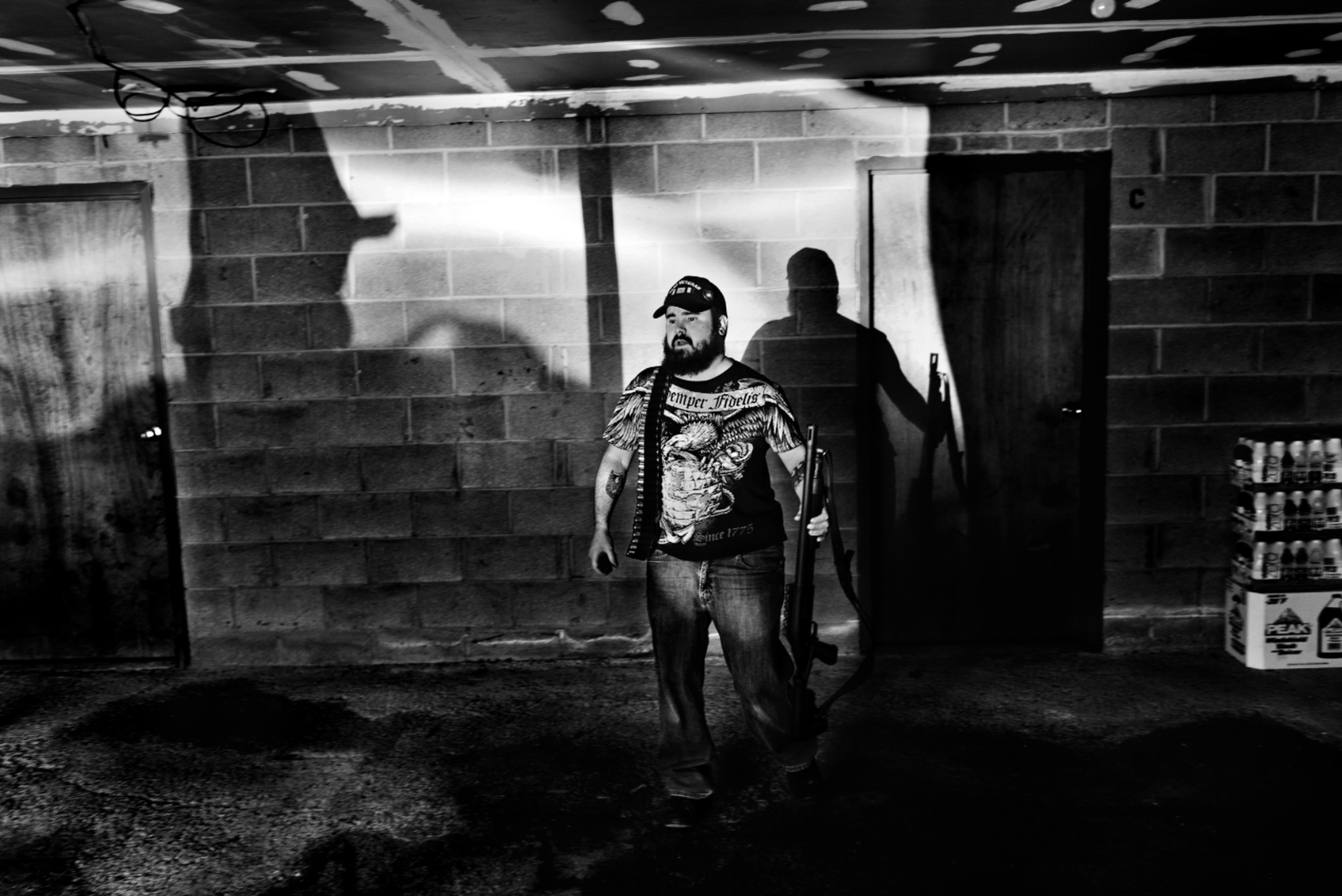Informing Contexts, Coursework - Constructed Realities
February 15, 2018Although we have already discussed how all photographs are constructions to some extent, this week, we have been analyzing images that are purposely fabricated or staged to a more extreme extent, and that intentionally challenge the viewer’s assumed authenticity of photography as a medium. These kinds of photographs create a push and pull effect for the viewer, as they sway between an understanding that all photographs have an indexical relationship with the real, but also the knowledge that this image has been drastically manipulated or constructed.
At first glance, it is easy to mistake the images from Hiroshi Sugimoto’s Diorama series for wildlife photography, shot in an array of exotic locations. However, just as the name of the series suggests, these images all depict dioramas located in the American Museum of Natural History in New York. What is interesting about this work, is how the photographs make the dioramas come to life. When viewed at the museum, the stuffed, motionless animals placed in front of a painted backdrop, appear entirely fake. However, when reduced to a flat, still image, they become easily mistakable for the real thing. On this Sugimoto notes ‘However fake the subject, once photographed, it’s as good as real.’ (Sugimoto in Coppelman, 2015)
Philip Lorca diCorcia also blurs the lines between reality and fiction in his series Hustlers, which depicts male prostitutes in L.A. in early 1990’s. To create this series, diCoria scouted locations, set up elaborate lighting, and meticulously planned out his images, before approaching male prostitutes to ask them to model for him. Each resulting image is titled with the man’s name, age, place of birth and the fee that diCorica paid him to pose for him, this cost being the same as their customary price for a sexual act. There is a definite filmic quality to these images - The scenes are illuminated like movie sets, and the poses and locations invite us to create a narrative surrounding these isolated moments. Whilst so much of these images is entirely fabricated by diCorica, we are simultaneously aware that the subjects themselves are real. The glamour and falseness of the Hollywood style production is juxtaposed with the gritty authenticity of the protagonist in each image.
At no point do Sugimoto or diCorcia attempt to conceal the methods they used to construct the images above. In the creation of fine art photography, purposeful manipulation is often expected, and excepted. However, the following image, by photojournalist Paolo Pellegrin came under fire when it was initially published, as such fabrications are not permitted in the world of photojournalism.
This image is included in Paolo Pellegrin’s The Cresent, a series documenting poverty, crime and violence in the Cresent neighborhood of Rochester, NY. The image was initially captioned ‘A former US Marine corp sniper with his weapon. Rochester, NY. USA 2012’, however, the subject in the image, Shane Keller, soon disputed this description, claiming that he is not a former US Marines sniper, nor was the image taken in the Cresent neighborhood, and goes on to explain how the shot was constructed by the photographer. (Read in full here). At this time Shane Keller was actually a student at Rochester Institute of Technology, which was working in collaboration with Magnum to create this series. He was asked by Pellegrin to pose with his firearms in the garage of his apartment building. This intentional misrepresentation is considered unethical and unacceptable in the world of photojournalism. Although Pellegrin has since defended the accusations, and the caption has been changed, this case illustrates the importance that context plays in the viewers allowance of a photographer to construct images.
Bibliography
Bicker, P. 2013. Trade: Philip-Lorca diCorcia’s Hollywood Hustlers [Online]. [Accessed 15 February 2017]. Available from: http://time.com/3803327/trade-philip-lorca-dicorcias-hollywood-hustlers-drug-addicts-and-drifters/
Coppelman, A. 2015. Eerie yet gorgeous scenes make taxidermy spring to life [Online]. [Accessed 15 February 2017]. Available from: https://www.wired.com/2015/01/hiroshi-sugimoto-dioramas/
Shaw, M. 2013. When Reality Isn’t Dramatic Enough: Misrepresentation in a World Press and Picture of the Year Winning Photo. [Online]. [Accessed 15 February 2017]. Available from: https://www.readingthepictures.org/2013/02/when-reality-isnt-dramatic-enough-misrepresention-in-a-world-press-and-picture-of-the-year-winning-photo/
Sugimoto, H. 2017. Diorama. [Online]. [Accessed 15 February 2017]. Available from: https://www.sugimotohiroshi.com/new-page-54
Winslow, D. 2013. Paolo Pellegrin Responds To Claim Of Misrepresented Winning World Press, POYi Photos [Online]. [Accessed 15 February 2017]. Available from: https://nppa.org/node/36604
World Press Photo. 2012. Paolo Pellegrin ‘The Cresent’ [Online]. [Accessed 15 February 2017]. Available from: https://www.worldpressphoto.org/collection/photo/2013/general-news/paolo-pellegrin/06


